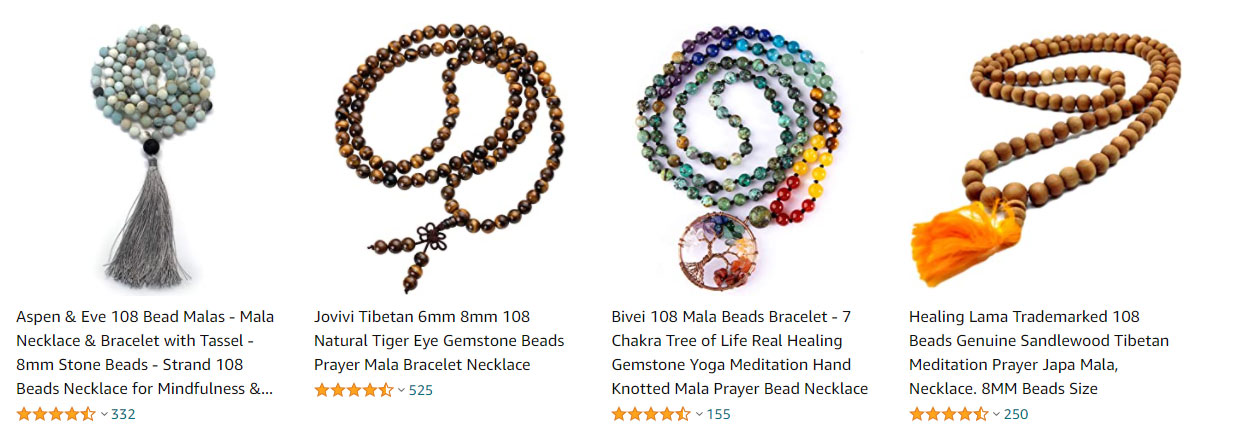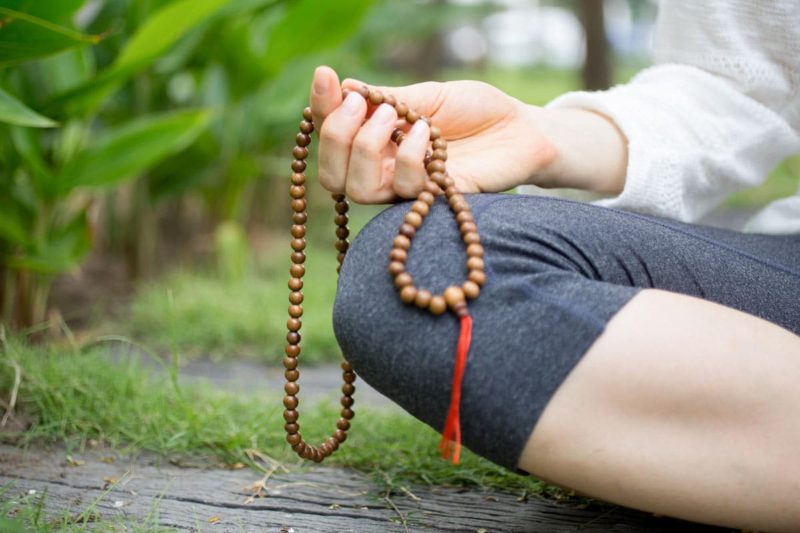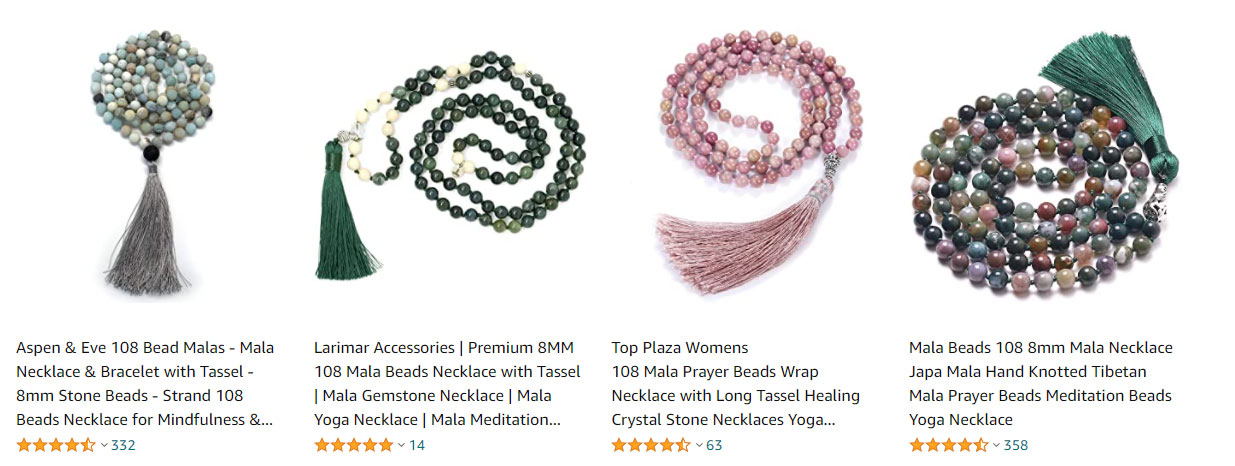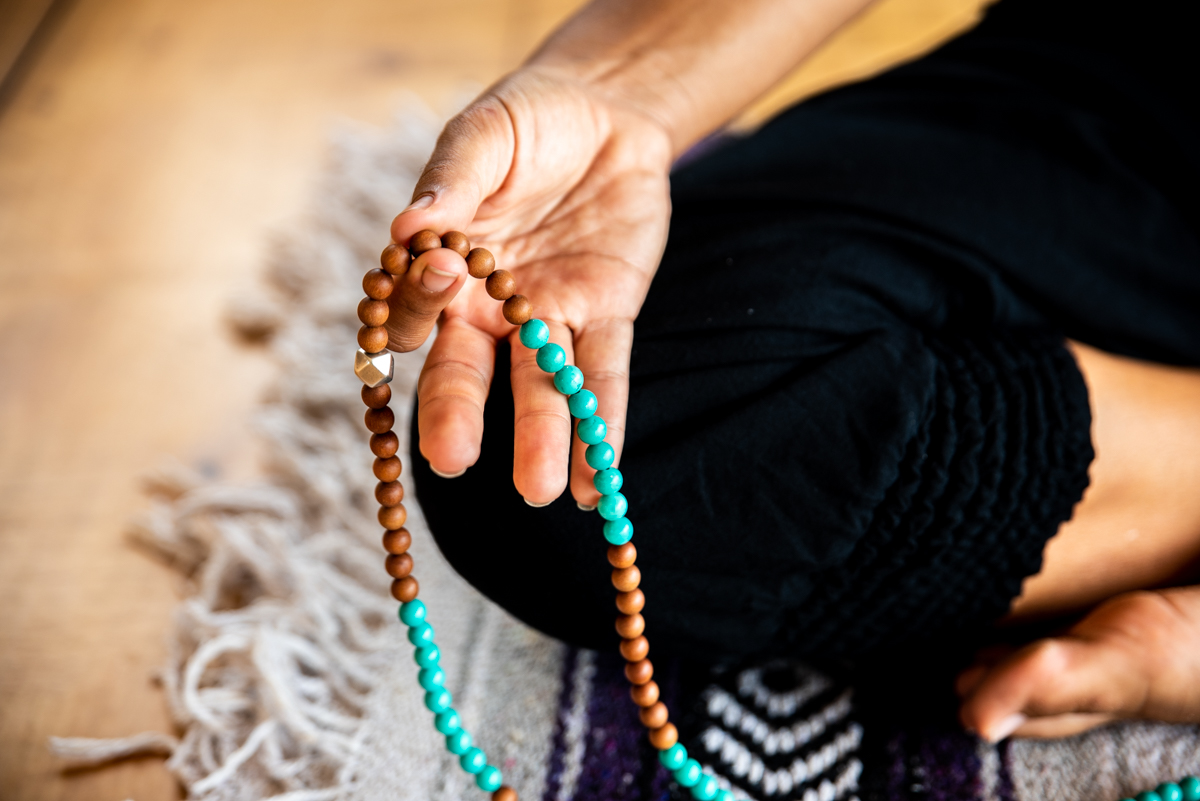How to use mala beads
A mental practice inseparable from the Buddhist religion or philosophy of life, meditation is a personal act of spiritual reflection filled with benefits.
The basic principle is to focus one's attention on a specific point, a thought or an object while emptying one's surroundings. The goal is to face oneself to find the universal phase called "awakening".
But what would meditation be without the famous Buddhist Mâlâ bracelets? These small meditation accessories are more than useful to any meditator, beginning as stated. But when one begins, one often wonders how to use them.
Then, on this page, we explain you how to do, after a reminder on the Buddhist bracelets.
What is a Mâlâ necklace?
Even if it is nowadays very popular to wear a Buddhist rosary (Mâlâ) around the wrist, many people do not know its origin and even less the main purpose.
Because beyond its beauty, this accessory has very particular symbols and spiritual functions.
First of all, it is necessary to know that it is a bracelet of Buddhist origin, and that the name Mâlâ means "meditative garland" in old Indian Sanskrit. The Mâlâ bracelet is an ancestral jewel that came from India more than three millennia ago.
Like a rosary, it is the accessory which represents the religious and spiritual practices of Buddhism and Hinduism. Thus, since all this time, it has been the sacred accessory of meditative prayers.
Consisting of 108 stones, its design is based on various beliefs of the most sacred.
The Mâlâ meditation bracelet can be of different sizes, but it is always composed of sandalwood beads or, more generally, semi-precious stones which have the particularity of possessing within them energies whose flow will come to feed our internal Chakras.

How to use a mâlâ to meditate?
Meditation is not always easy, especially when one begins, the mind can quickly start to wander.
The pearls of the mâlâ are there to focus the attention and allow to concentrate better and this in two ways:
• thanks to the movements of the fingers on the pearls
• by touching and reciting a mantra to each bead
Breath control (simply paying attention to one's breathing is in itself a form of meditation) and repetition of the mantra* retained are an excellent starting point.
It is important, of course, to choose a mantra to recite before starting the session.
* A mantra is a phrase, word or sound that you can use to help you focus your consciousness during meditation. "Om" is a common word, but there are countless others. You can easily create your own mantra that is meant to be reassuring to you.
Once you have done this, and after you have cleared your mind, you need to find a position that is most comfortable for you. It's true that the position of the tailor's seat, called the lotus position, is one of the best, especially to keep a good posture with a straight back.
With your eyes closed, you must now clear your mind and concentrate only on reciting the mantra. Everyone will have a preference between reciting it out loud or quietly, as there are no real rules in this matter.
While concentrating as much as possible, it is important to breathe slowly and deeply.
• Hold your mala with one hand.
• Let it slide on your fingers so you can move it easily. Place two fingers around one of the pearls next to the guru's pearl (central pompom). Many people use their thumb and middle finger because some religious traditions avoid using the index finger (the index finger is associated with the ego and the ego should be left out of meditation. Thus, the index finger points away from the hand and one tries to keep it away).
• Take a full breath (inhale and exhale) for the time of the mantra recitation (you can also rotate the bead on itself during this lapse).
• Move your fingers to the next pearl, inhaling and exhaling once per pearl.
• Finish at the guru's pearl to complete 108 breaths.
• If you want to do another round, simply move your fingers in the opposite direction until you reach the guru bead again.
As the days and sessions go by, your male necklace will be charged with energy thanks to the mantras recited and the practice that you will have successfully performed.
It is at this moment that it becomes important to wear your mâlâ necklace around your neck, because it will diffuse the energy contained in the pearls and stones to your chakras and thus make you benefit from the beneficial virtues for your mind and spirit.

Meaning of the mâle and the number 108
Beyond its aesthetics and the beauty of the stones or pearls that compose it, the meditation necklace known as mâlâ is a blessing for our minds and a capital tool to help channel the emotional and spiritual of each person, if used wisely. Above all, it is important to know that in Buddhism, the number 108 is sacred.
It alone represents many situations related to Buddha the Enlightened One. For example, the 108 names attributed to him, the 108 positions contained in the greeting to the sun or the 108 important deities of Hinduism.
The number 1 is supposed to represent the whole, the O represents emptiness and the 8 embodies infinity.
These are the reasons why the male meditation necklace is almost always composed of 108 pearls or stones. It is in close correlation with Buddha and is thus the essential accessory of any successfully practiced meditation.
The necklace of meditation known as mâlâ, beyond its 108 pearls or stones, is generally finalized with an acorn at its end.
In rarer cases, one can find a pearl larger than the others to act as the end of the necklace. It is also thanks to this tassel or this larger pearl that we know that we have just made the tour of the 108 pearls, as we will see below.
We can also sometimes find a small cone next to this acorn, it is him which represents the emptiness and thus all that is empty and essential, which remains an ideology very anchored in the religion of Buddhism. The number of threads supporting the pearls or stones will have as much importance in the design of a mâlâ necklace.
Indeed, according to the models, they are made with 3, 6, or 9 threads. In fact, the more threads there are, the more the accession of Buddha towards Enlightenment is evoked within the mâlâ.


